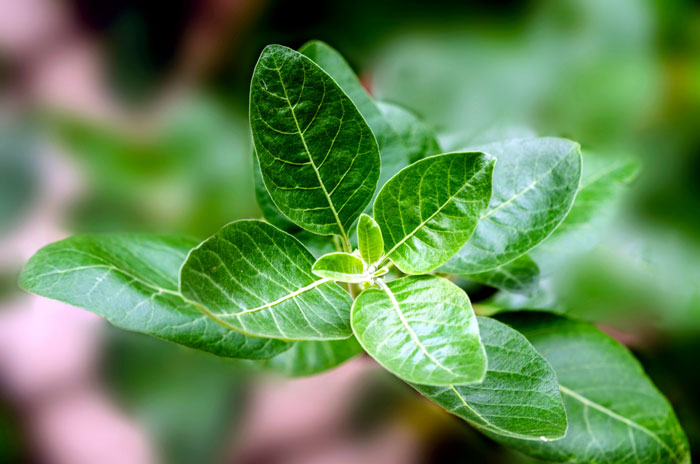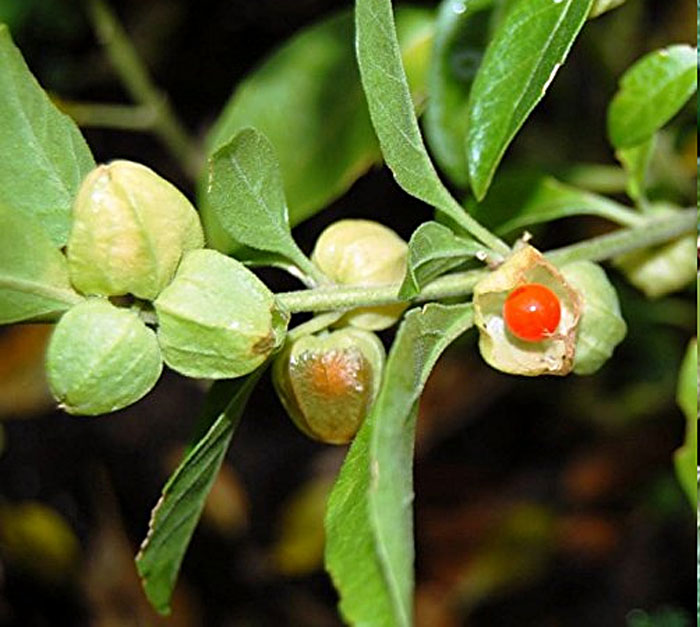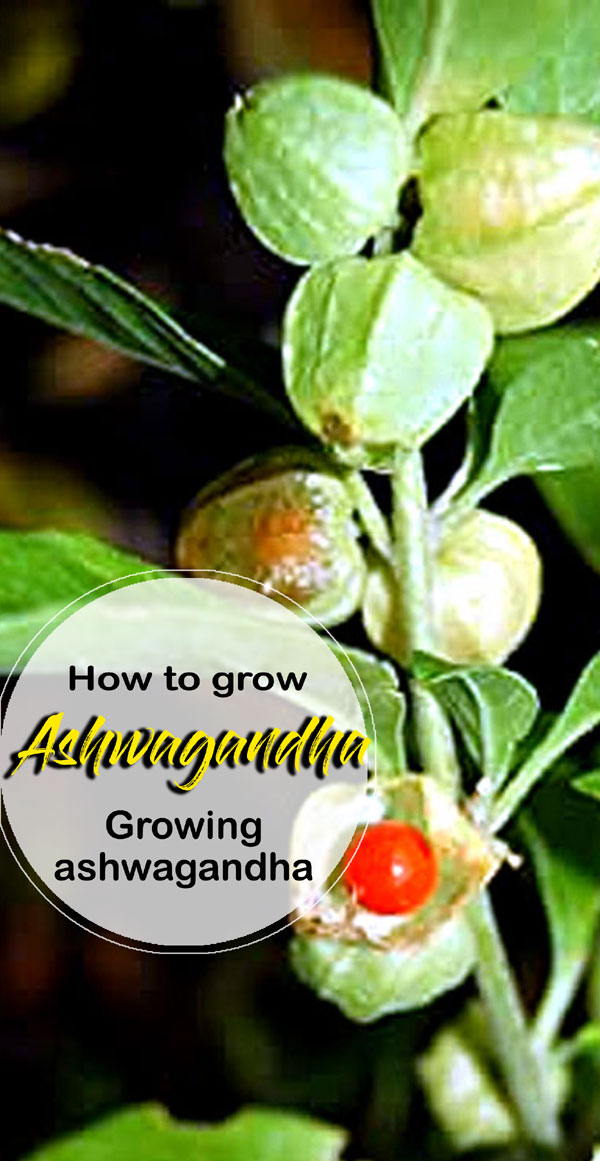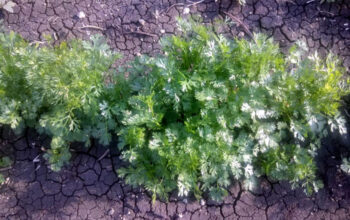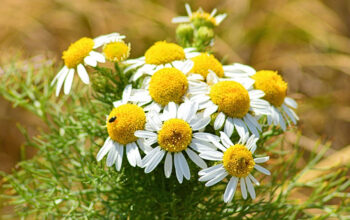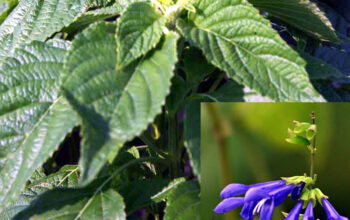Growing Ashwagandha
Learn how to grow Ashwagandha herb at home. Know the health benefits of this amazing herb with climatic and soil requirements to make is grow healthier. Withania somnifera is also known as ashwagandha. It is also known as Indian ginseng, poison gooseberry, or winter cherry. Ashwagandha is native to India and Nepal. This plant is very difficult to find outside these regions. Ashwagandha plant holds a lot of medicinal properties as stated in Ayurveda, but because of lack of evidence and researches, medical science does not support this statement.
The Withania somnifera species is known to be “sleep-inducing” in Latin. Ashwagandha’s name is a Sanskrit name which is a combination of 2 words i.e. ash meaning horse and gandha meaning smell. Together it means horse-like smell, roots of ashwagandha is said to release the horse-like smell.
In Indian ginseng, the main phytochemical constituents are withanolides i.e. triterpene lactones. These lactones are withanolides, withaferin A, alkaloids, steroidal lactones, tropone, and cuscohygrine. In total ashwagandha contains 40 withanolides, 12 alkaloids, and n number of sitoindosides.
Ashwagandha overview
Scientific name Withania somnifera
Kingdom Plantae
Popular names Ashwagandha, Indian ginseng, Poison gooseberry, Winter cherry
Plant type Medicinal plant
Sun requirement Bright full sun
Water requirement Very less
Soil conditions Sandy dry soil
Soil pH 7.5 -8
Zone 6
How to grow Ashwagandha
Propagation and plantation
Ashwagandha can be planted with seeds. It shows better results when planted through the transplanting method. However, it can also be planted through the broadcast method. Ashwagandha plant is grown in the regions of low rainfall. This plant is drought tolerant and can rot in more water. The ideal temperature for growing Indian ginseng is somewhat between 75 – 85 F i.e. 25 – 30 C.
Transplantation method
The bed for growing ashwagandha seeds should be raised from ground level for proper drainage of water. Plant the seeds before the onset of monsoon and cover with the thin layer of sand to avoid damage.
Seeds will start to grow in 6-7 days and you will be able to witness baby plants of poison gooseberry. In nearly 4 weeks’ baby plants will be ready to transplant in the main field.
Once you start transplanting the seedlings make sure the distance between the ridges should be 60 cm to ensure healthy growth. Each plant should be placed in ridges at a distance of 30 cm, each plant will get the same nutrients from the soil.
In 1-hectare, plant density should be 55,000 seedlings, which is considered as optimum density. 5-kilogram seeds would be required for covering 1- hectare of the land.
Soil and location requirement
Indian ginseng grows well in sandy soil. the pH level of the soil should be 7.5 – 8 i.e. neutral to slightly alkaline. Ashwagandha grows in hot and dry climates with low rainfall. This climatic condition explains why sandy soil is preferable. Sandy soil is highly porous and the air gets in easily. Ashwagandha cannot retain in sol which holds water.
Water requirements
Excessive watering and waterlogging can kill this plant. Water the seedlings at the time of plantation this will help it to settle and tighten their roots. After the transplanting process is complete, water once every 10 days. Watering ashwagandha plant is a very crucial step, one overdose of water and it can kill your plant. Therefore, keep a check on the soil every time you plan to water your plants.
If the temperature is very high i.e. above 40 C, then you can water them after 5 days. If you are living in a place where the temperature does not rise above 30 C, then for better yields water the ashwagandha plants after 8 – 10 days. You can also check the soil before watering them. If you see tiny cracks on the ground, then you know it is the time to shower little water to them.
Temperature requirements
The ideal temperature for growing ashwagandha is somewhat between 75 – 85 F i.e. 25 – 30 C. ashwagandha can also grow in the temperature above or below this temperature but it affects the overall growth speed of it. The speed becomes generally slower than normal.
Ashwagandha caring tips
Fertilizers and manures
Farmyard manure, Vermicompost, and green manures are the ideal manures for growing ashwagandha. Since ashwagandha is used as medicine no chemical fertilizers are used as it can harm the person consuming it as a medicine. You can add fertilizers and manures during the preparation of soil. If you have already added the manure to the soil, then there is no need to add extra.
An excessive amount of manure and fertilizers can also damage plant growth. Poison gooseberry plant requires 10 – 12 tonnes of FYM (farmyard manure) and 1- 2 tonnes of Vermicompost per hectare of plantation.
Pest and diseases poison gooseberry
- Common pests and diseases in Ashwagandha are aphids, mites, insect attacks, transplant rot, and bling.
- Whereas ashwagandha is prone to several diseases in which alternaria alternata causes the most prevalent leaf spot disease in them.
- Another problem faced by this plant is due to a treehopper. Treehopper makes the plant look rough, woody, and brown in color.
- Carmine red spider mite is another most prevalent pest which accommodates these plants. Some mealybug species also make home to this plant. The most favorite food for these bugs is plant juices which ultimately kills the plant.
- To prevent these diseases, you can make use of disease-free seeds or you can treat theses seeds before planting. However, the solution for all these pests making their homes in your plant, you can till your plants in between after they are tightly held by the soil. This process will dig out the bugs from the underground.
Harvest
160 – 180 days after plantation is the right time for the harvest of ashwagandha. When the leaves start to dry and when the berries turn reddish-orange in color it symbolizes the time to harvest. Ashwagandha is known for the use of its roots. Therefore, the plant should be uprooted for roots.
The correct method for harvesting poison gooseberry is to do a little mud around the plant and then pull the plant straight up from without tilting. This way you will get the roots in fine shape without breakage. After pulling the plant, the area above the ground should be cut.
Uses and health benefits of ashwagandha
The Health benefits of eating Indian ginseng are as follows:
- Boosts immunity
- Lowers cholesterol
- Good for heart health
- Reduces depression and stress
- Stimulates underactive thyroid
- Boosts energy level
- Prevents the growth of cancer-causing cells
Growing and care of Elephant apple. How to grow oregano herb plants. Growing Golden barrel cactus. How to grow orchids indoors. Astres growing and care tips. Chickpeas cultivation and care tips. Love-in-a-Mist plants growing guide. Rosemary herb plants growing guide. Periwinkle growing and care tips. Celery herbs growing guide. 9 fast-growing vegetables. 7 indoor plants greenery around you.
For pin

